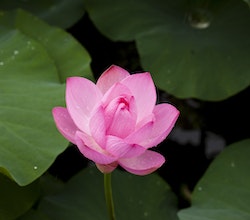| Description | Nelumbo nucifera, commonly known as the sacred lotus or simply lotus, is a remarkable aquatic plant that holds deep cultural and religious significance in many parts of the world. Here are some key points about Nelumbo nucifera:
-
Appearance: The sacred lotus is a beautiful, perennial aquatic plant with large, round leaves that float on the surface of still waters. It produces striking, fragrant flowers that can vary in color, including white, pink, and sometimes yellow. The lotus flower has multiple layers of petals, giving it a unique and captivating appearance.
-
Habitat: Nelumbo nucifera is native to Asia and can be found growing in various parts of the continent, particularly in regions with warm, temperate climates. It thrives in shallow ponds, lakes, and slow-moving rivers, where its roots are anchored in the mud at the bottom.
-
Symbolism and Cultural Significance: The lotus holds profound symbolism in various cultures and religions. In Hinduism and Buddhism, it represents purity, enlightenment, and spiritual growth. The lotus is often associated with deities and is a common motif in temple architecture and religious art.
-
Medicinal and Culinary Uses: Various parts of the lotus plant are used for medicinal and culinary purposes. The seeds, known as lotus seeds or "makhana," are edible and are often used in Asian cuisine. They are also valued for their nutritional content. Additionally, different parts of the plant have been used in traditional medicine for their potential health benefits.
-
Adaptations to Aquatic Environments: Nelumbo nucifera has evolved several unique adaptations to its aquatic habitat. Its leaves have a waxy coating that repels water, keeping them dry and allowing them to float on the surface. The long stalks that support the leaves can extend to reach the water's surface from deep below. This adaptation enables the plant to capture sunlight for photosynthesis.
-
Conservation Status: While not currently considered endangered, the sacred lotus faces threats from habitat loss and pollution, as urbanization and industrialization continue to impact wetland ecosystems. Conservation efforts are in place to protect this culturally and ecologically significant plant.
In summary, Nelumbo nucifera, the sacred lotus, is a captivating and culturally rich aquatic plant with a long history of symbolism and practical uses. Its striking appearance and deep-rooted significance continue to make it a cherished and revered plant in many parts of the world.
|
|---|


